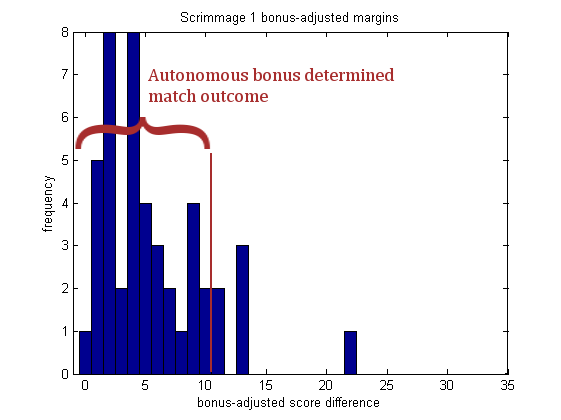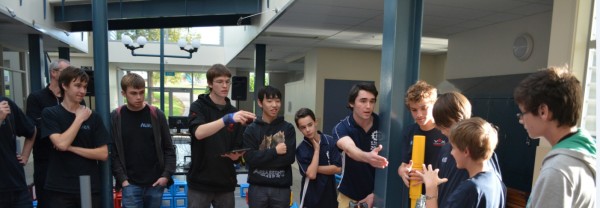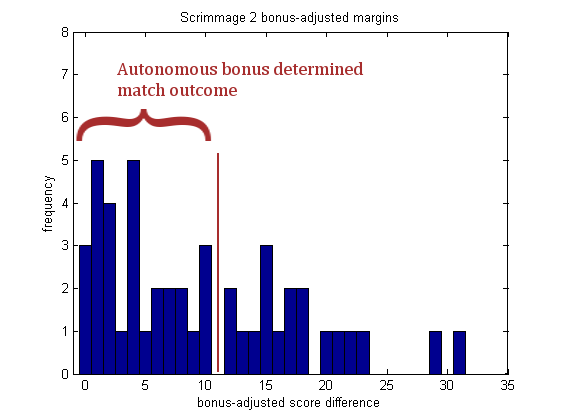Auckland’s second ladder scrimmage was very well attended. 31 teams competed in six matches each to try to improve their ranking on the qualification ladder for NZ Nationals 2015.
Teams are ranked on the Nationals qualification ladder according to their win percent across all of their scrimmages. The top three teams on the ladder are now 7682 (Wingus and Dingus) on 6-0-0, 8595A (BDSC Robotics) on 6-0-0, and 7682E (Wingus and Dingus) on 5-1-0. All of these teams competed only in the second scrimmage. The top team to have competed in both scrimmages is 2909B (ACG Parnell B), on 10-3-0.
After the ladder matches a friendly elimination bracket was held with eight alliances of two teams. The champions were the second seeded alliance, 7682 and 7682E, both of whom did very well throughout the scrimmage. In fact, the only time a 7682 team lost a ranking match was when they played against each other. The finalists were the first seeded alliance, 2909B and 2919M (Impulse). Both of these teams also reached the finals at scrimmage 1 – 2919M on the winning alliance and 2909B on the finalist alliance.
Teams’ overall performance in the ranking matches improved in the four weeks between scrimmage 1 and scrimmage 2. The average score for an alliance in the 46 ranking matches at scrimmage 1 was 11 points. The average score for an alliance in the 47 ranking matches at scrimmage 2 was 16 points. Statistically speaking, there is strong evidence that this difference was not due to chance and we can estimate the true improvement in the average alliance’s expected score to be between 2 and 8 points between the two scrimmages.
The margins by which teams won their matches also increased. The average winning margin at scrimmage 1 was 8 points, while the average winning margin at scrimmage 2 was 14 points. Again, there is strong evidence that this difference was not due to chance. We can estimate the true increase in expected winning margins to be between 3 and 10 points.
The autonomous bonus, or lack thereof, decided the match outcome in 29 of 47 ranking matches (62%). This compares to 39 of 46 ranking matches (85%) at scrimmage 2. Matches counted in this statistic are those where the difference in scores, ignoring the autonomous bonus, was no greater than 10 points.
Below are two histograms showing the distribution of the score differences at the two scrimmages when the autonomous bonus is not counted:

What these show is that while losing the autonomous bonus is still a huge disadvantage, it’s no longer as difficult to recover from as it was initially. Teams would still be well advised to write an autonomous program that can at least drive off the tile, and it’s still very helpful to have an autonomous program that can score two or more points consistently.
Thanks to Kristin School for providing the venue. The next scrimmage is at Ormiston Senior College on July 19.
AURA volunteers present: Hamish, Abigail, Oliver, Nathan, Jack, Chris, Cameron, Kazuki, Vincent, Nadia
Volunteer hours: 72

